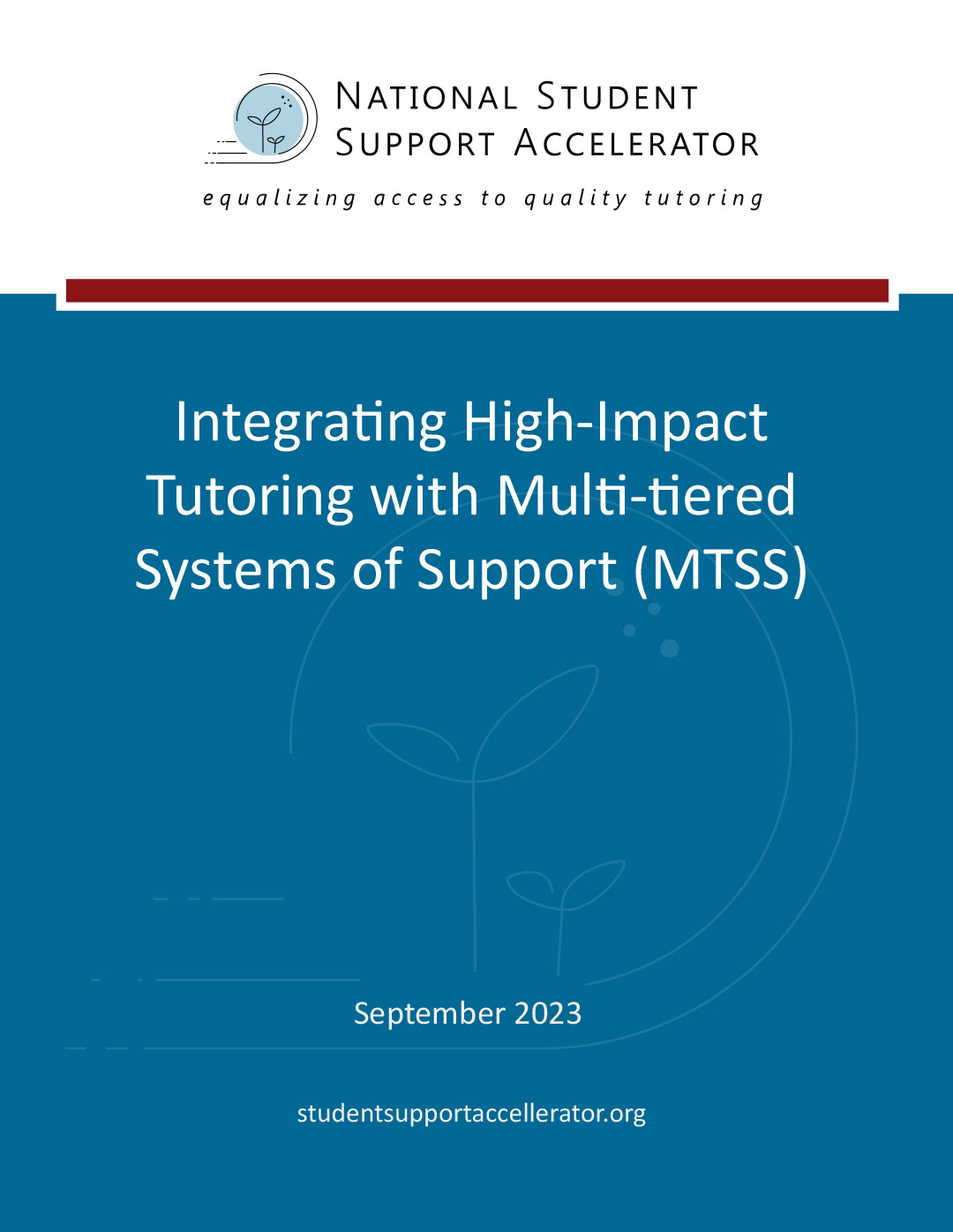The ESSER cliff is coming. Most districts and states that initiated high-impact tutoring using federal ESSER dollars are scrambling. Many believe they must eliminate or reduce the scope of their programs; but this is not the case. Here are six durable funding streams that could replace the ESSER dollars to help provide highly effective tutoring in new, cost-saving ways.
- Title 1: Of all the federal Education Department’s funding streams, Title 1 is the best-known, the largest and the most appropriate for tutoring (although the others are also useful places to look). It was designed to target extra resources to high-need schools, specifically for math and reading. The good news is that a tutor is not needed for every student for every subject, so only a portion of Title 1 dollars is necessary. Tutoring is most important for students struggling with their coursework, including those who are not on track for proficiency in reading by the end of third grade or for passing Algebra 1 by the end of ninth. Students who meet these benchmarks are four times more likely to graduate from high school as those who don’t. Districts should look hard at how they are spending Title 1 dollars to help students reach these two goals, redirecting staff positions or funds to tutoring programs with demonstrable return on investment.
- Multi-Tiered Systems of Support: Districts across the nation use Multi-Tiered Systems of Support to target appropriate interventions for students with learning, social, emotional, or behavioral difficulties. Many districts could improve these offerings by using a high-impact tutoring approach, making sure their interventions build relationships between students and educators that motivate, engage and target students’ growth areas using data and high-quality instructional materials. Schools can integrate high-impact tutoring with the funds already being used for MTSS by reallocating resources to more effective approaches.
- AmeriCorps: One of the priorities of this 30-year-old program is to support effective tutoring for high-need students. AmeriCorps awards tens of millions of dollars in grant funding for tutoring and mentorship in early learning and K-12 schools. Districts can apply directly for federal funds through their State AmeriCorps commissions. These three-year grants can largely cover the costs of tutors and supervisory staff. Districts can also seek vendors that are AmeriCorps partners to provide tutoring, which brings a subsidy from the vendor directly into the district.
- Work-study: This 60-year-old program enables lower-income students to work their way through college. Of the 20 million undergraduates in the U.S., about 600,000 receive work-study as part of their financial aid packages. This allows colleges to use federal funds to subsidize work by their students. Recent guidance has called on colleges and universities to spend at least 15% of those funds on community-based jobs, and tutoring is among the roles prioritized. With a district as a community partner, a college can subsidize up to 100% of a tutor’s wages.
- U.S. Department of Education teacher preparation funds: The 60-year-old Hawkins Program is designed to increase the number of well-prepared teachers from diverse backgrounds. The focus is on the various aspects of the teacher preparation pipeline, including the recruitment, support and placement in underresourced schools with underserved students. This fund goes directly to higher ed; districts should partner with local colleges to design a tutor-to-teacher pathway.
- U.S. Department of Labor apprenticeship funds: These can support apprenticeship programs for future teachers. State departments of education can help districts address teacher shortages by strengthening the pathway to the classroom through the real-world experience of tutoring in schools. New Jersey’s Tutor Corps, for example, has just become a federal apprenticeship provider.
Since school districts often lack the capacity to seek grants or manage compliance requirements, leaders could ask local philanthropies for help. They could also rethink some of their current procedures to save money in the short and long term.
...
